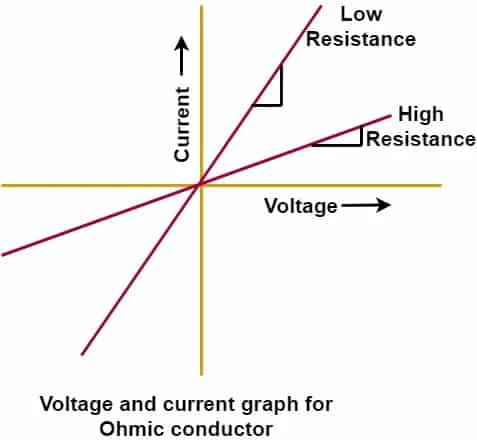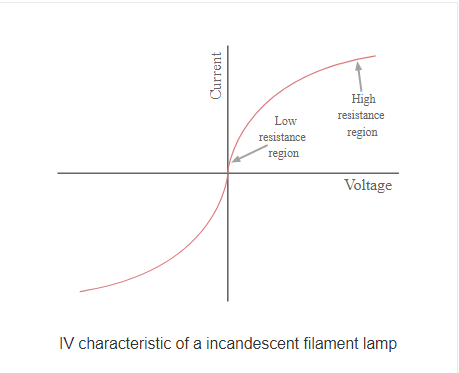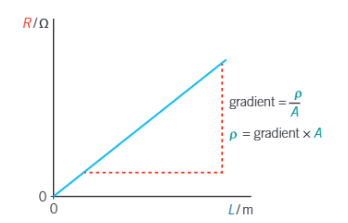Physics M4T3 Electricity
1/20
There's no tags or description
Looks like no tags are added yet.
Name | Mastery | Learn | Test | Matching | Spaced |
|---|
No study sessions yet.
21 Terms
Current
Rate of flow of electric charge ( I = Q / t )
Charge
1 coulomb equals the amount of charge that flows in 1 second when the current is 1 Ampere
Charge of an electron: (-) 1.6×10-19 C
- Fundamental property of matter (+ or - ).
- + and +, - and - repels, - and + attracts
Mean drift velocity
The average velocity attained by charged particles, such as electrons, in a material due to an electric field, resulting in a net flow of charge.
I = A n q v
A - X area n - no. charges per m3 q - Charge per particle v - Drift velocity
- Charges move randomly but overall tend to drift in one direction.
- The mean drift velocity (v) is the average of these velocities.
Comparing charge carriers
Metals - many free electrons (carriers), good conductor
Semiconductors - fewer free carriers, requires higher drift velocity to achieve the same current as metals
Insulators - very few or no carriers, poor conductors
(molten) ionic solutions - positive and negative ion carriers, conducts OK
Gases - does not conduct, can conduct when ionised
- Thus, metals have highest value of n, Insulators have lowest
- n can vary with temperature
Kirchoff’s 1st law
At a junction in a circuit, the current into the junction is equal to the current out of the junction
- Shows conservation of charge
- Shows why current is split in parallel
Electric circuit symbols
Learn
E.m.f. and P.d.
Potential difference is the work done per unit charge by the charges on the component
e.g. Lamp, resistor, heater etc
P.d. of 1 volt in a circuit means 1 Joule of work is transferred per 1 Coulomb of charge flowing through it
Electromotive force is the work done per unit charge on the charges by the component/power supply
e.g. cell, battery, power supply etc
Relating p.d. to kinetic energy
The electron gun: high current passes through filament, emitting electrons (thermionic emission). Electrons are accelerated through the high p.d., also repelled from the cathode(-) and attracted to the anode(+), passing through a small hole into the rest of the tube.
Mass on an electron is 9.11×10-31 kg
Work done by p.d. and the kinetic energy of it can be equated to give: W = eV = ½mv2
e - charge of electron (1.6×10-19) V - voltage m - mass v - velocity
The electron volt (eV)
1 eV is the work done on 1 electron as it is accelerated through 1 Volt
1 eV = 1.6×10-19 Joules (derived from V = W/Q )
- The electron volt is a unit of energy
Resistance
Resistance is the potential difference across a component per current travelling through the component
- A component’s tendency to resist the flow of charge
Calculated from a strict ratio of V and I
Ohm’s Law: a component obeys Ohm’s law if the p.d. across it is directly proportional to the current through it, under a constant temperature
e.g. fixed resistor, wire at fixed temp
- In practice, keeping a low and stable temp is enough to be ohmic
Temperature and resistance
As current flows due to the p.d., temperature in the conductor increases, the positive ions have more internal energy and vibrate with a greater amplitude about their mean positions. The frequency of collisions between charge carriers and the positive ions increase, so the charge carriers do more work, reducing the mean drift velocity, transferring more energy through the wire.
CHECK TO REMOVE UNNECESSARY STEPS
Ohmic resistor I/V charcteristics
Straight line represents constant resistance (Ohmic)
Steeper gradient means lower resistance
Direct proportionality between I and V
- Temperature is constant
- Behaves the same no matter the polarity

Filament lamp I/V charcteristics
Curved line represents varying resistance (Non Ohmic)
As current heats up filament, (temp. and resistance relationship from above) causes resistance to increase, +Extra energy causes even more vibration, even more collisions, therefore curved.
- Behaves the same no matter the polarity

Diode I/V charcteristics
Only conducts current in one direction
Not directly proportional, varying resistance (Non Ohmic)
When p.d. is negative, the resistance is extremely high. The current is VERY low
Above 0.6V, resistance drops significantly. The current increases rapidly.
- Polarity matters (direction the current is flowing and which way it is attached)

Resistivity
Resistivity at a given temperature is the product of the resistance of the component and its cross-sectional area, divided by its length.
Resistance is also influenced by: Length, Area, Resistivity
R = ρl / a
Conductors have the lowest resisitivity, semiconductors second, insulators highest resistivity
- Resistivity can only be calculated at a given temp. as it changes with temp.

Resistance with length and cross sectional area
R ∝ L (Directly proportional, if L doubles, R has to double)
R ∝ 1/A (Inversely proportional, if A doubles, R halves)
What are thermistors (Semiconductors)
For a negative temperature coefficient thermistor (NTC), resistance decreases as temperature increases.
- Useful in temperature sensing circuits, e.g. thermostats, aircon, kettles, monitor engine temperatures
+Thermistor water bath experiment
Thermistor I/V characteristics
Varying resistance (Non Ohmic)
As current increases, temp. increases, but unlike a filament lamp, resistance decreases, because the thermal energy allows electrons to leave their atoms/ions, increasing the number density of charge carriers increase.

Light dependent resistor (LDR) (Semiconductor)
As light intensity increases, resistance decreases
Dark - num. density of free electrons very low, high resistance
Light - electrons absorb energy from light photons, breaking free from atoms/ions, num. density of free electrons very high, low resistance
Power and electrical energy
Power is the rate of energy transfer/doing work (P = W/t)
+ Other power equations…
W = Pt = VIt
Paying for electricity
1KWh is the energy transferred by a device of 1KW power for 1 hour (KWh is energy used)
1KWh = 3,600,000 Joules (1000W x 60 × 60 (P = W/t))
To calculate, first calculate energy used/work done via W = Pt, then divide by 3,600,000 (1 KWh) to get kilowatt hours of your appliance